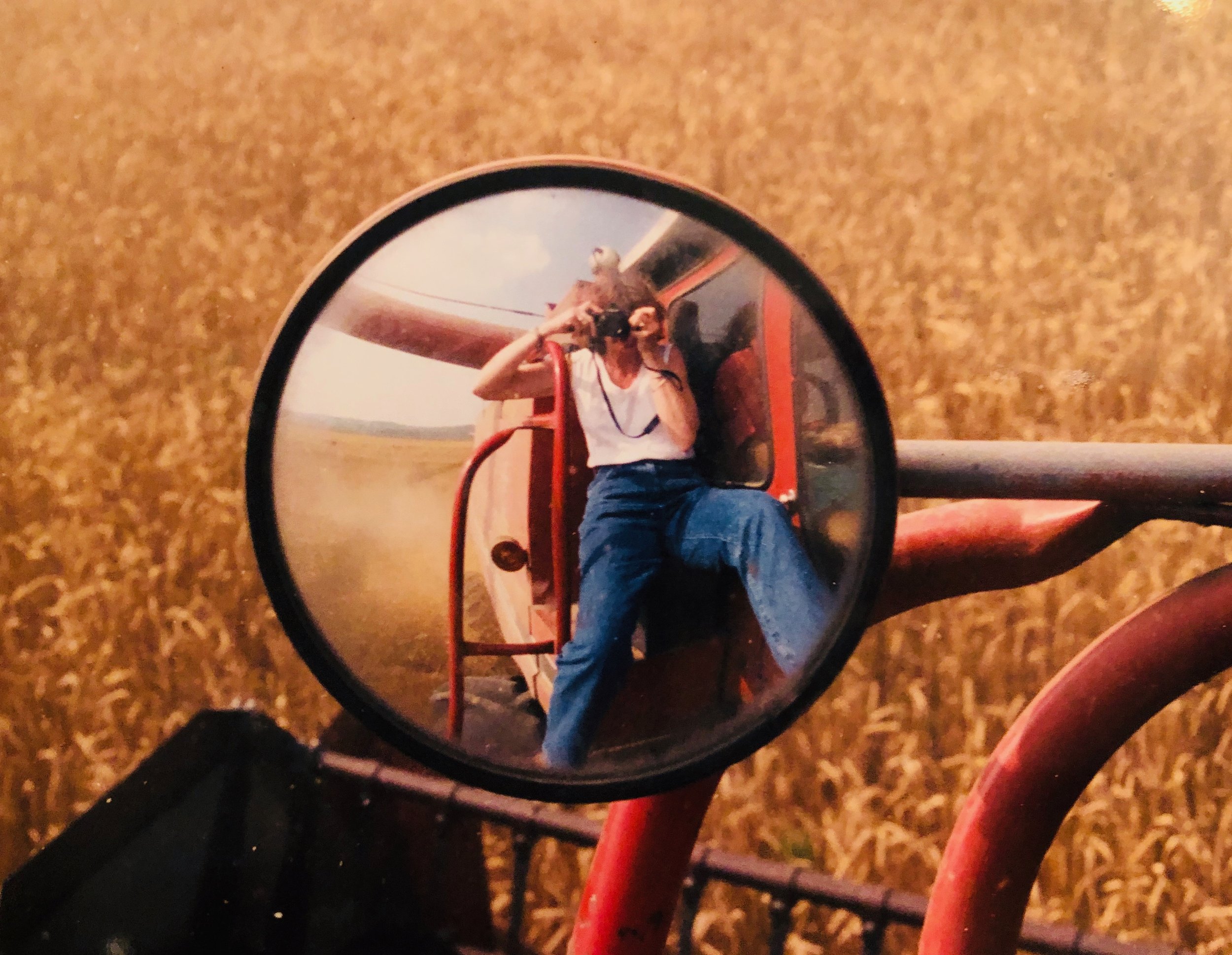Wheat and War in Ukraine’s Breadbasket
The Ukrainian flag is modeled after the country’s fields of golden wheat and sky-blue skies. Our amber waves of grain owe much to theirs, and times like these reveal the substance in our symbols. (Amy Halloran, author of The New Bread Basket)
In Nevada City as friends planted squash seeds on the night of the March full moon, American History professor Heather Cox Richardson, author of a daily blog entitled “Letters from an American” wrote about the urgency of planting wheat in Ukraine’s breadbasket region. Small villages, farmland and farmers have become targets in Russia’s unprovoked war against this democratic nation and its civilians. In her March 18, 2022, letter, Richardson reminded her readers of how this war of destruction will continue to affect the world in the coming year—
“First, the war has affected not only Ukraine’s people and infrastructure, but also its ability to produce wheat, corn, and sunflower oil. Before the war, Ukraine was the world’s second biggest exporter of grains and biggest exporter of sunflower oil. It provided over half of the corn imports to the European Union, about a fifth of its soft wheat, and almost a quarter of its vegetable oil. (Soft wheat has less protein—gluten—than hard wheat, corn feeds Europe’s animals, and sunflower oil is in processed foods, including baby food, where it is hard to replace.)
“Ukraine president Volodymyr Zelensky has urged farmers to plant as much as they possibly can, but Russians are moving into valuable farming land and killing farmers. Supply chains for fertilizer and animal feed are breaking down, causing prices to skyrocket just at planting season; roads and bridges are bombed out; and ships cannot leave ports in the Black Sea, meaning they cannot transport crops. Food prices in Europe are almost certainly going to spike this year.
“More immediately, millions of the world’s poorest people, who are dependent on Ukrainian grains, are going to suffer. Egypt, Tunisia, Algeria, Morocco, Lebanon, and Turkey all depend on wheat from Ukraine. A disruption in grain supplies will send those countries into the market, driving up prices globally, especially as countries with their own grain slap controls on grain exports to make sure their people have enough. That will hurt the world’s least food-secure countries, like Bangladesh and Yemen. The U.N. World Food Programme has predicted 2022 will be ‘a year of catastrophic hunger.’”
As I read Heather Cox Richardson’s explanation of how Putin’s war is now targeting Ukrainian farmers and blocking export routes, I have been reminded of how wheat first arrived in the American heartland. In the 1870s, Mennonite farmers emigrated en masse from the Netherlands to Prussia and Southern Russia, hoping to find a place to farm and worship in peace. Mennonite teams were also sent to the United States where they learned of cheap grasslands, sent teams to survey it, and wrote home of their approval. By 1874, Mennonite groups had begun to settle in Kansas.
They established towns north of Wichita, built huts, dug wells, and planted cherries, potatoes, and mulberry bushes along with Turkey Red wheat—a hardy variety better than the soft strains of spring wheat then being sown in the Midwest. Letters were sent to other Mennonites in Russia, encouraging them to come to Kansas and bring as much Turkey Red seed as their trunks, pillows, and hat boxes could carry.
Today, wheat is grown from Texas up into the Canadian provinces of Saskatchewan, Alberta, and Manitoba and from eastern Washington and northern California across to Pennsylvania. Wherever backroads lead you, Mennonites can be found still farming wheat. That crop has deep historic ties to Mennonite wheat fields planted in a region of Russia in the 1870s that today lies in the heart of Ukraine’s breadbasket.
My nephew Christopher has Mennonite roots himself. In June 1999, he visited Missouri during the wheat harvest taking place in Hartsburg—a small river bottom farm town close to our former home. I share this treasured memory of the beauty of the wheat harvest Christopher and I witnessed that magical summer—
Me riding a combine while photographing the wheat harvest in Hartsburg, MO.
“It was hot and dry when I drove Christopher down to the Hartsburg Bottoms. Perfect for the huge, mechanized combines that thresh the grain from the wheat stalks. We found Orion Beckmeyer, a farmer friend, where the wheat harvest was underway and hitched a ride in the cab of his giant International combine. At 9:00 p.m. when I drove my truck over the freshly cut wheat stubble back to the gravel farm road, we met Orion’s wife Barbara on her way to fields with a basket of sandwiches and sun tea.”
How appropriate that our farmer friends end their long workdays during the wheat harvest with a simple meal. A meal built around bread made from grains brought by eastern European Mennonites who made history by turning once empty grasslands in the American heartland into a breadbasket that now helps feed the world.”
As war rages in Ukraine, farmers are being killed at the very time wheat needs to be planted. If Ukraine’s spring crop by some miracle survives, it will be ready for harvest in July, just as it is in northern regions of the U.S. If instead Ukraine’s breadbasket becomes a vast, empty killing field, the consequences of this unconscionable war will truly be felt around the world.




